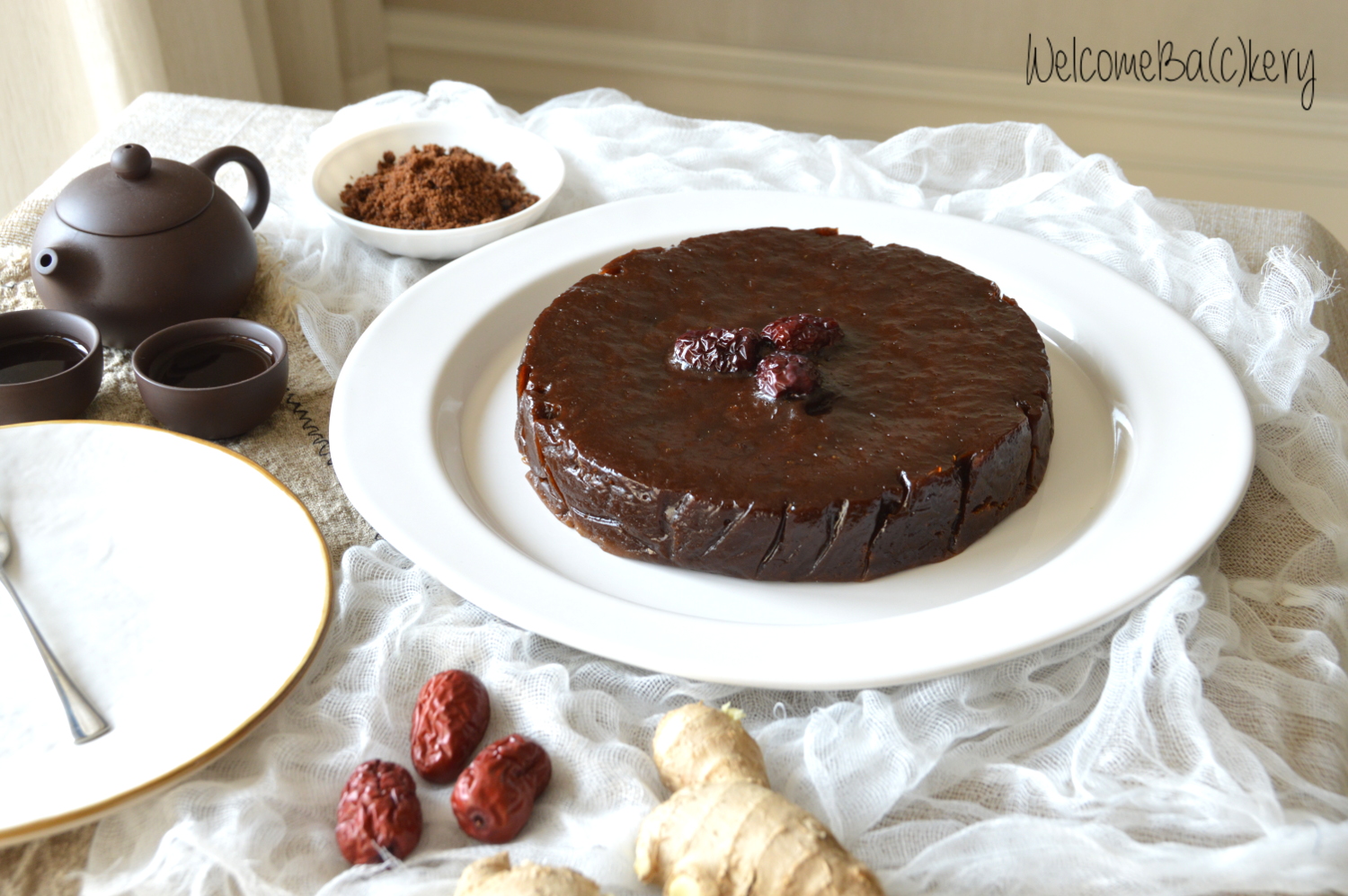
How can I not take such an occasion? Learn a new recipe and together a piece of culture so vast and deep of the country that hosts me and that fascinates me so much … So I found the version of the recipe that inspired me the most and I get to work. Compared to the plain traditional cakes this one has some added aroma: spices, vanilla, ginger and orange zest. If you want you can omit them to get a cake more similar to the original, but I assure you that they are really good! In some regions they also add red beans or bits of dehydrated fruit, so if you want you can improvised as well!
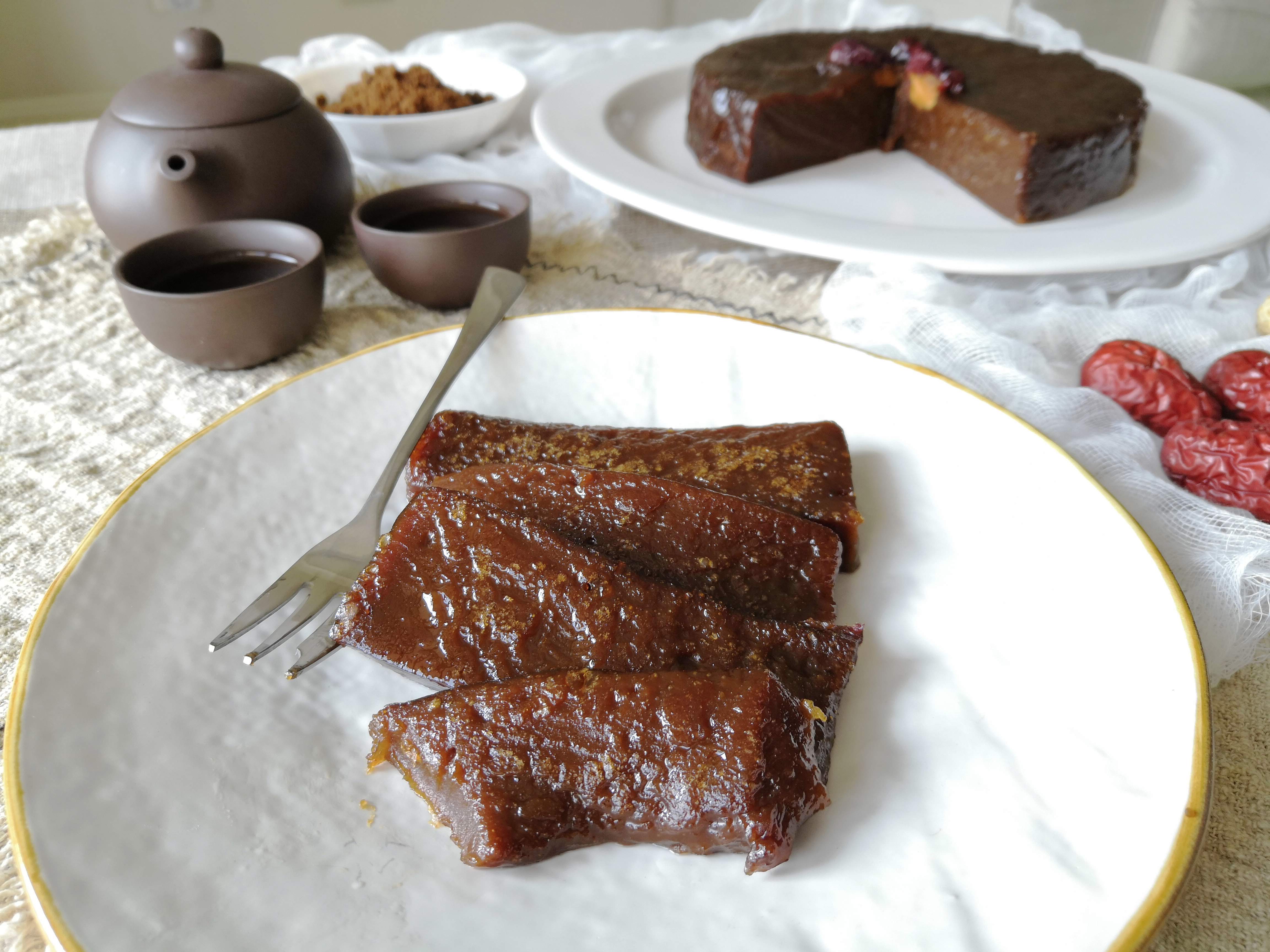
Don’t think you can skip the last phase of the pan-stir-fry: the cake should be served hot and this step softens the slices and enhances the glutinous rice and aromas. The left one can be stored in the fridge for a few days wrapped in film, or even frozen. Better cut it already sliced in the case.
I’ll certainly do it again for the New Year’s Eve on February 4th. And you, what are you doing? Do you allow yourself to be transported to China by a slice of hot cake? Are you going to try it?
Nian Gao
From The Woks of Life
Ingredients for a 20-22 cm diameter pan:
- 1 teaspoons vegetable oil
- 470 ml of water
- 2 slices of ginger
- 220 g dark brown sugar
- ½ teaspoon allspice powder
- 340 g of glutinous rice flour
- 110 g of rice flour
- 1 teaspoon vanilla extract
- 1 teaspoon dark molasses
- zest of 1 orange
- 3 dried dates, for decoration (optional)
Prepare one 20-22 cm round baking pan by brushing the insides with vegetable oil.
Add the half of the water and the ginger to a medium-sized pot, bring it a boil, then let it simmer for 10 minutes over low to medium heat with the lid covered. Turn off the heat, and stir in the brown sugar and allspice until the sugar is dissolved completely. Remove the ginger slices. Now add the remainig of cold water to cool down the mixture so its warm, not hot.
In a large mixing bowl, mix the two kinds of flours together and then slowly add in the sugar water mixture. Stir thoroughly until the batter is smooth (without any lumps). Now stir in the vanilla extract, molasses, orange zest, and 1 teaspoon of vegetable oil until thoroughly combined. The resulting batter should have a consistency similar to condensed milk. If the batter is too thick, add a bit more water a couple tablespoons at a time until the desired consistency is reached.
Pour the batter into the foil pan. Gently tap the pans against your countertop to get rid of air bubbles. Top the pan with three decorative dates in the center, if using. Put the pans in a bamboo steamer and steam for about 1 hour on high heat (the water should be boiling, but should NOT be bubbling high enough to touch the foil pan). You might need to add water into the steamer midway to avoid having the water dry up and burn your bamboo steamers.
After 1 hour, poke a toothpick into the rice cake. It’s done if the toothpick comes out clean–just like a regular cake! Regarding steaming techniques, for this recipe and in general, it doesn’t matter what type of vessel you use. The core goal here is to use steam to cook the food, which means it’s important that the steam doesn’t escape.
When you’re ready to enjoy, slice the cooled cake into pieces and pan-fry the pieces on all sides in a cast iron pan with a little of seeds oil.
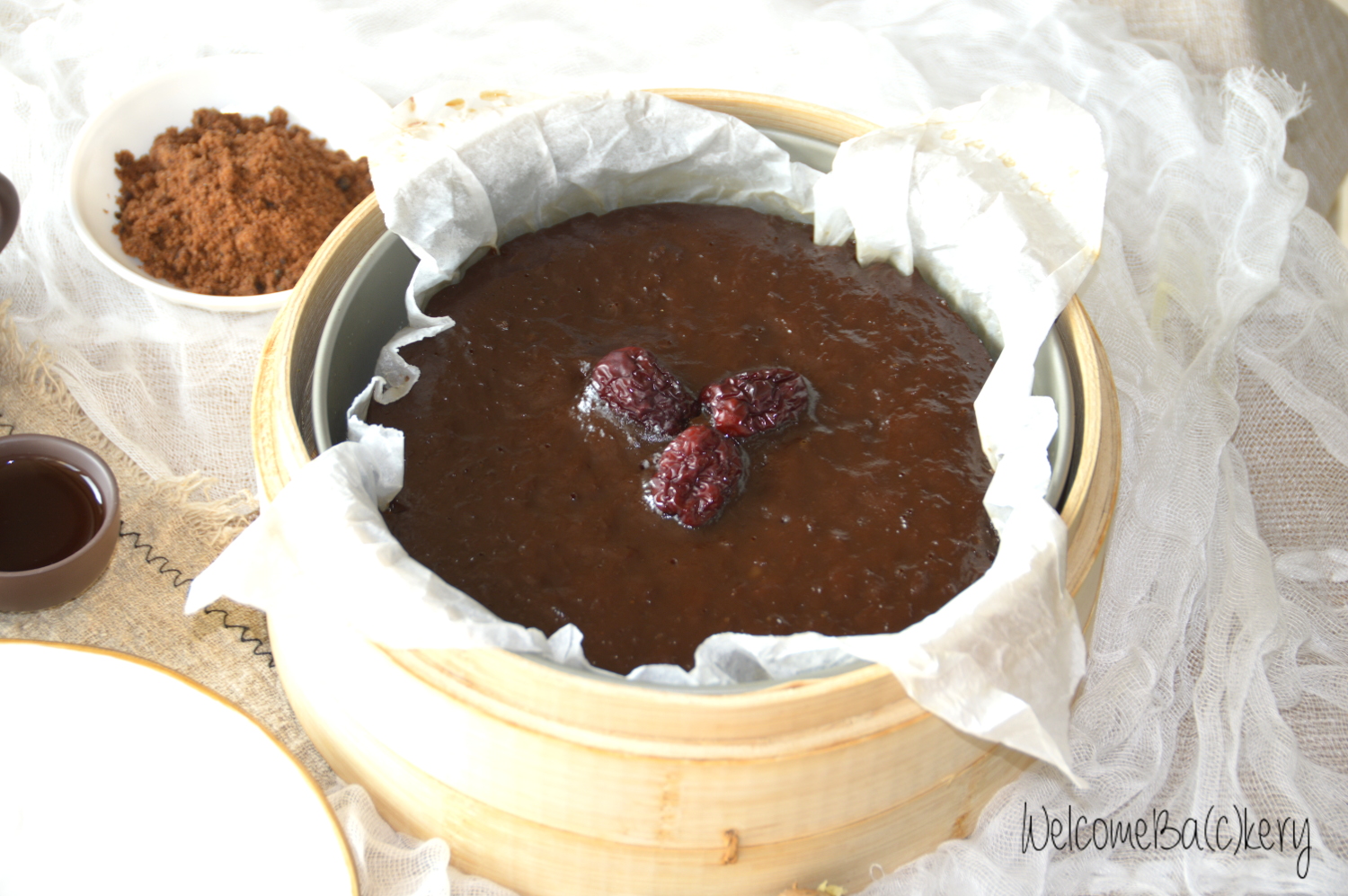


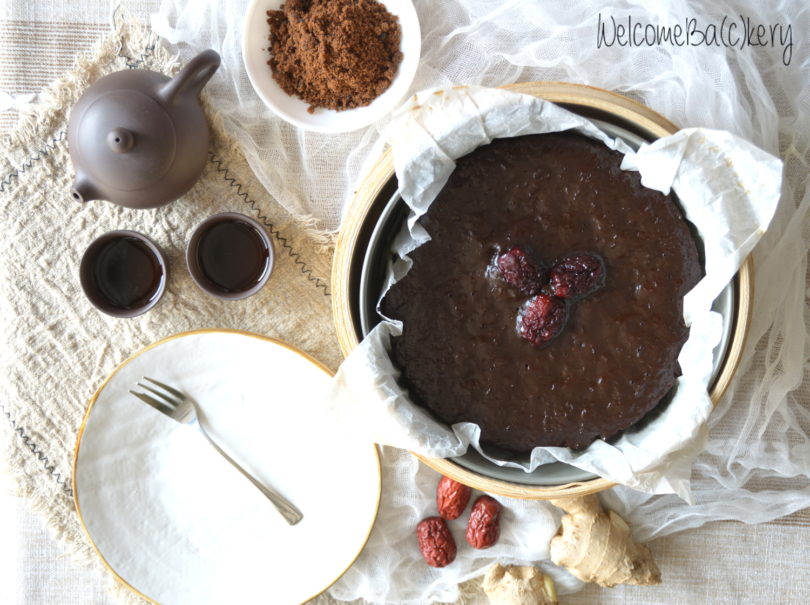
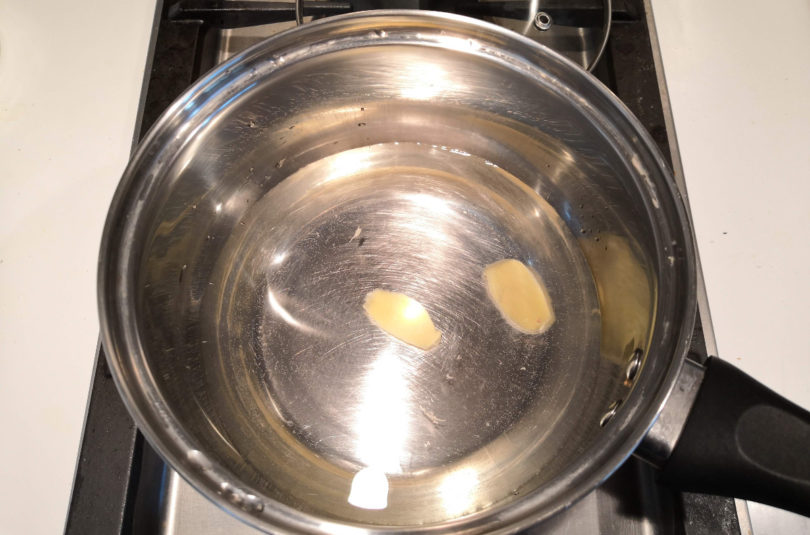
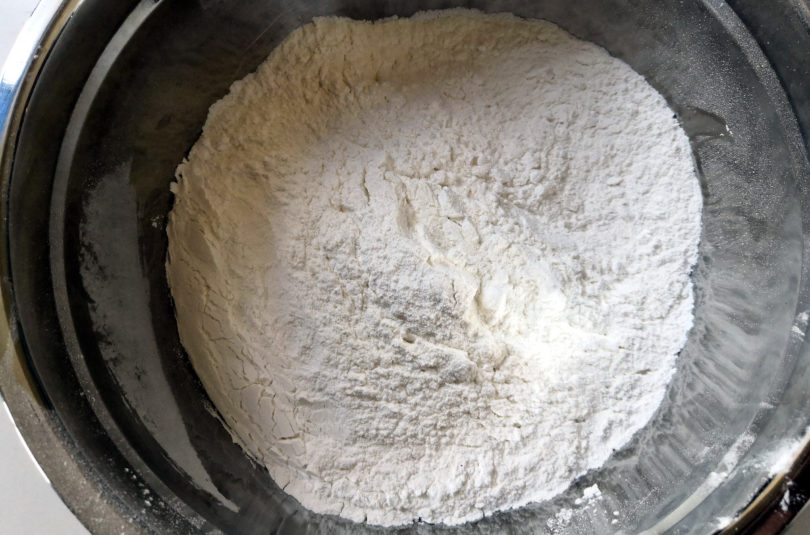
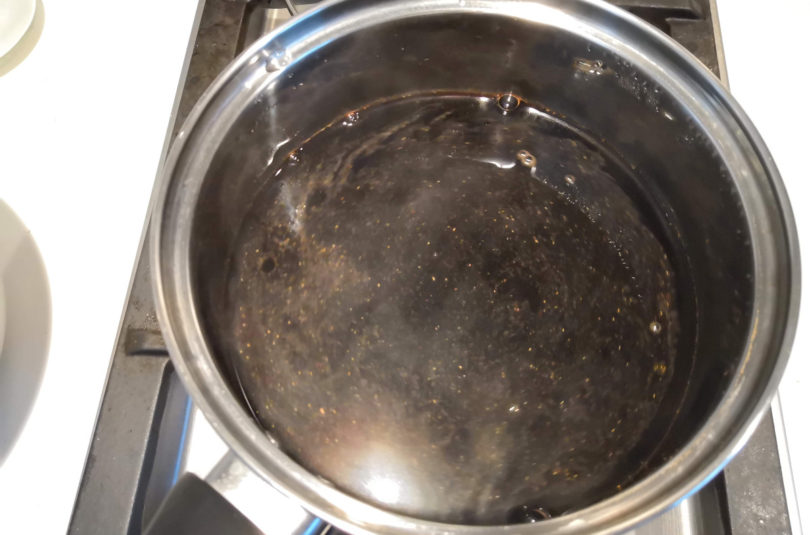
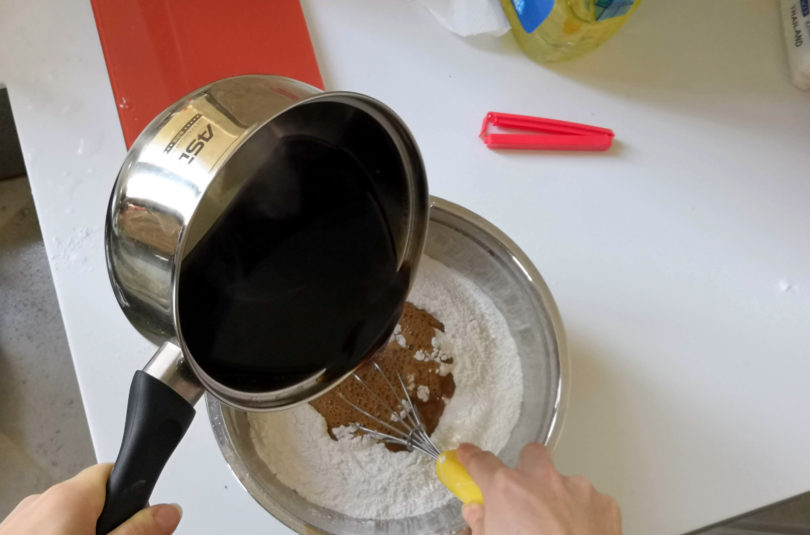
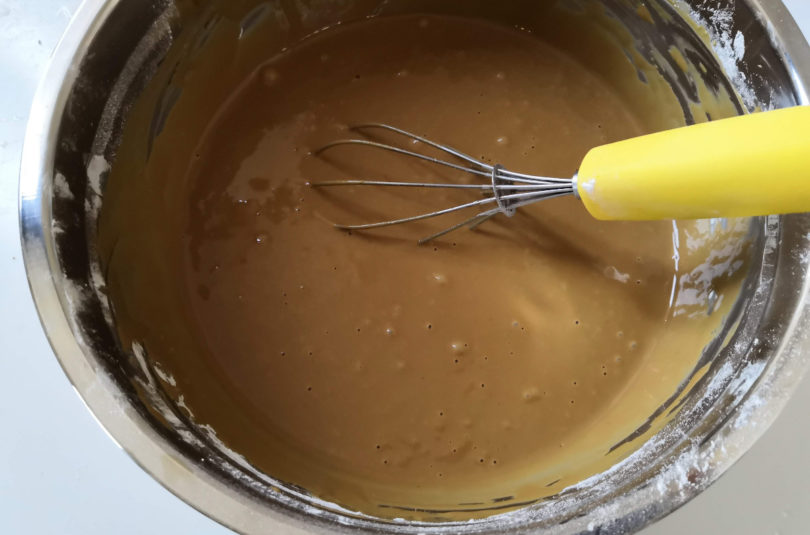
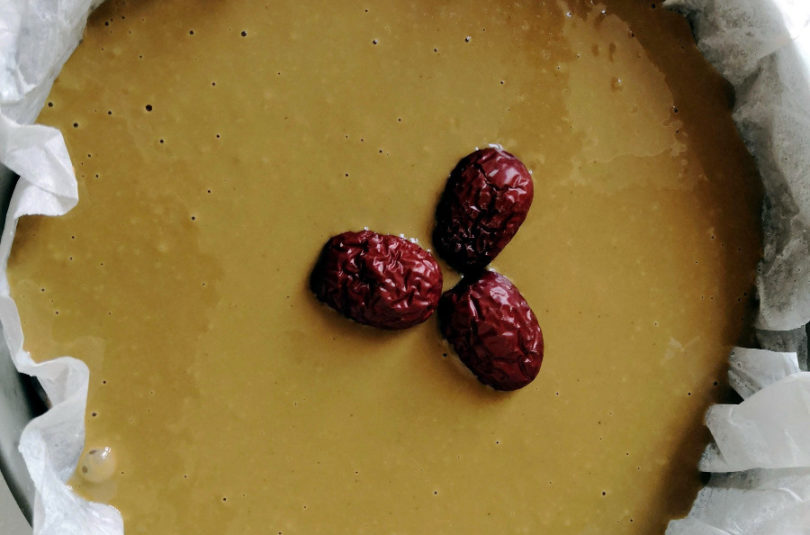
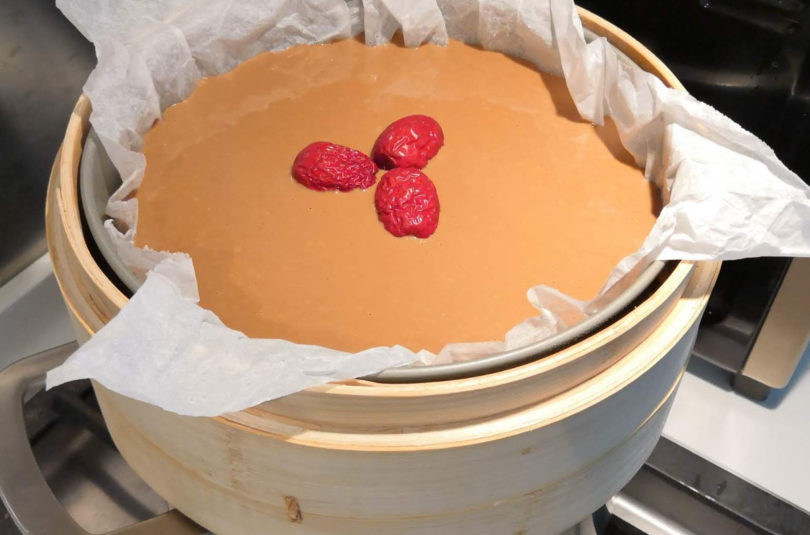
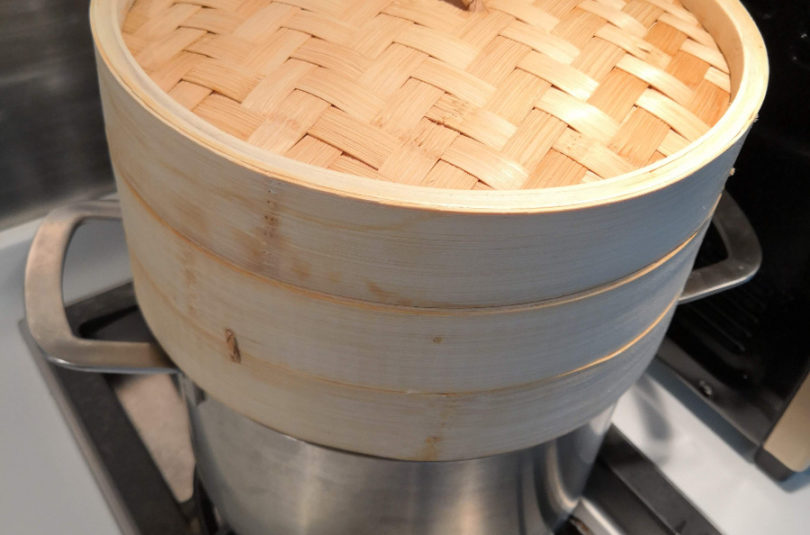
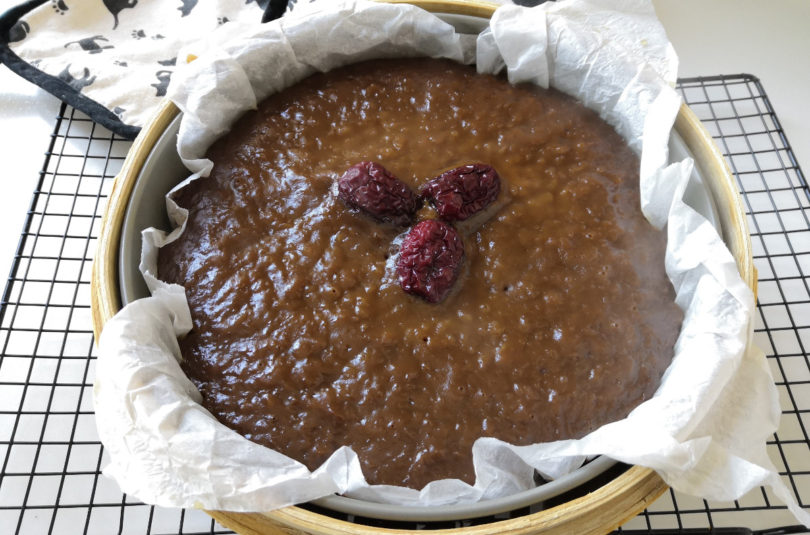
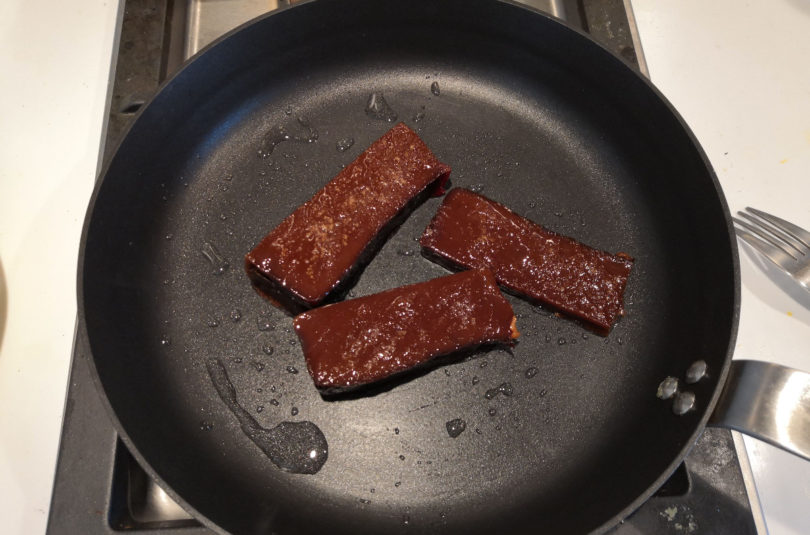
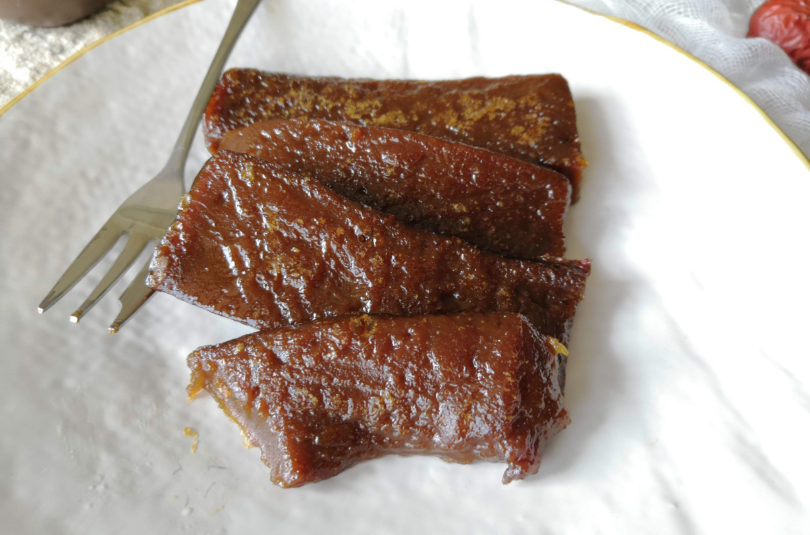


Leave a Reply